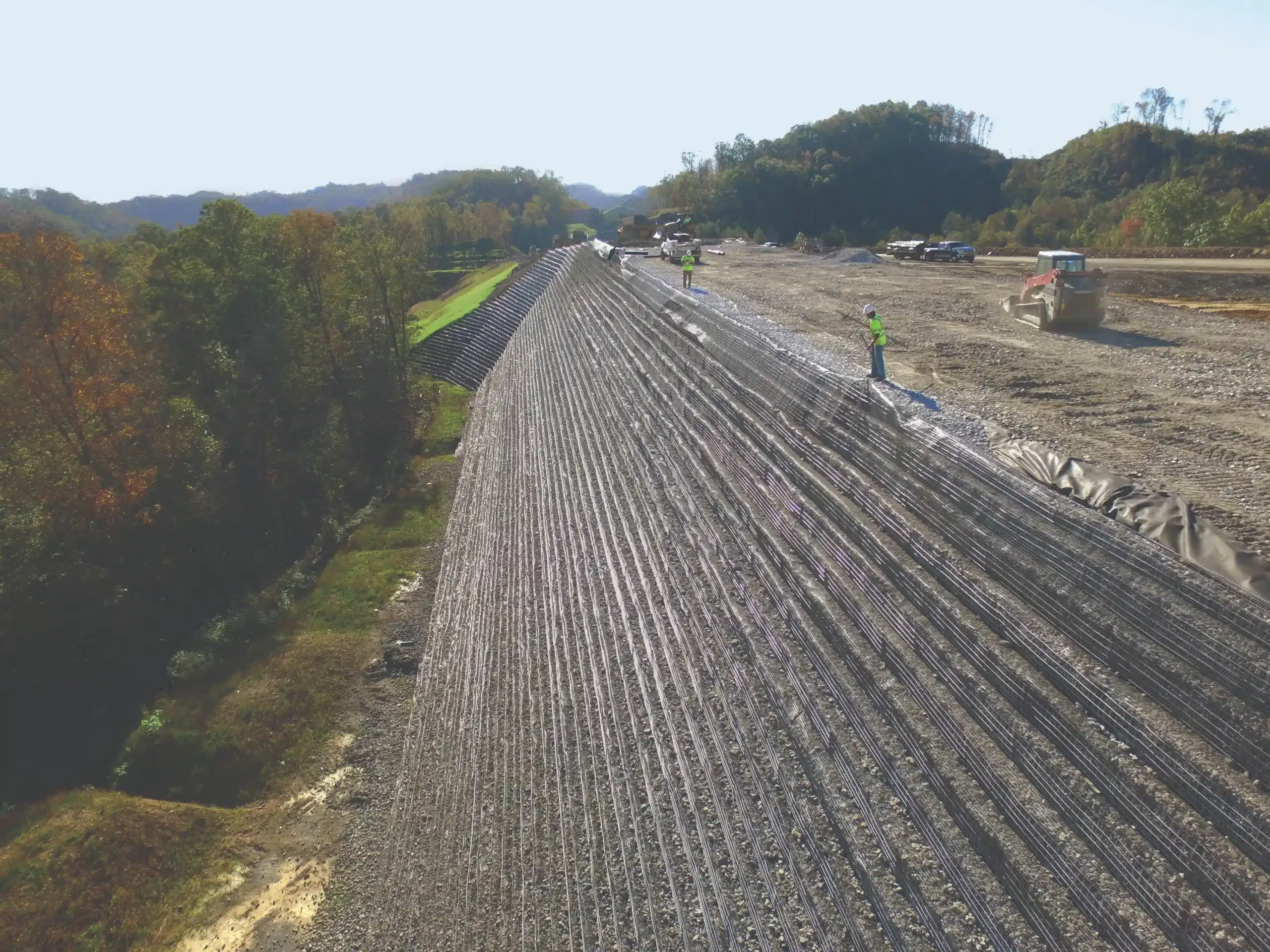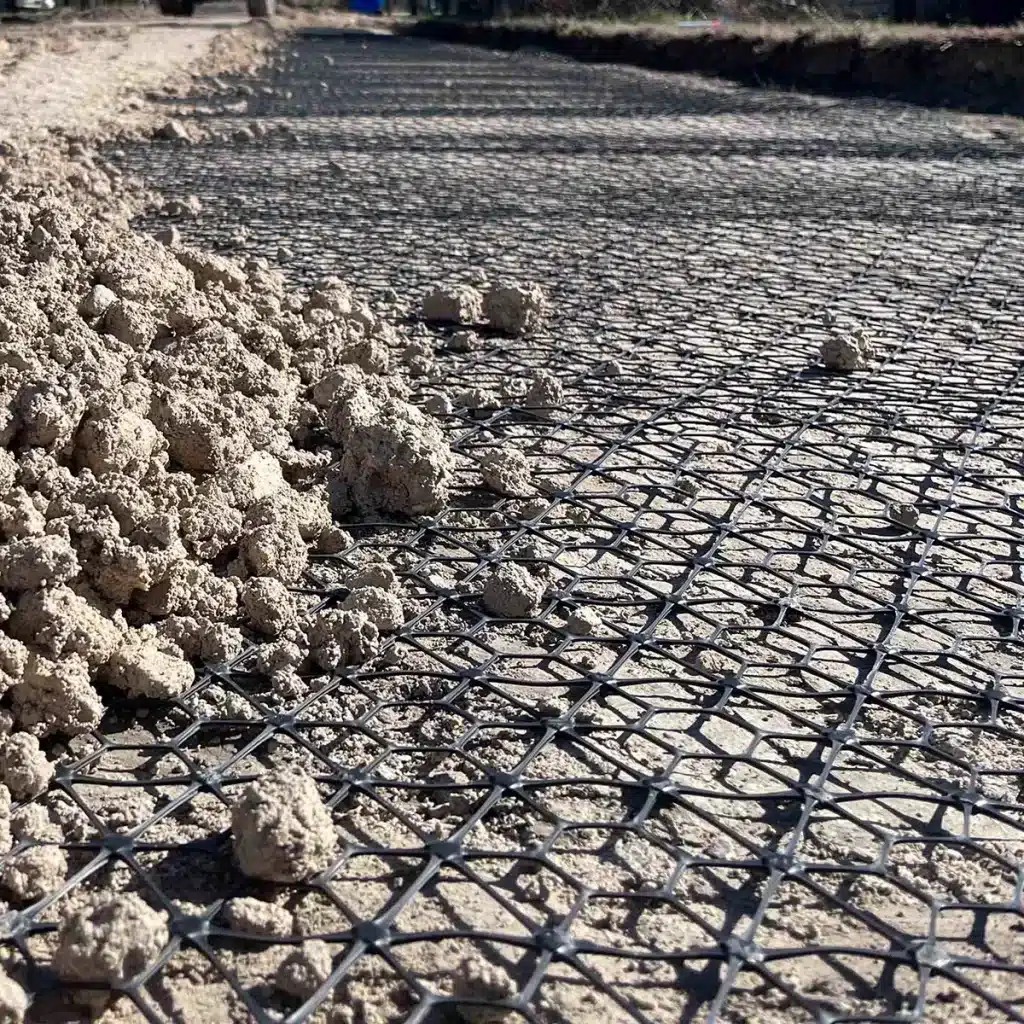+86-159 9860 6917
info@geofantex.com
geofantex@gmail.com
+86-400-8266163-44899
Reinforcing a segmental retaining wall doesn’t have to be complex or overly costly. It involves digging, backfilling, and compaction, which, compared to the expense of building a new wall, can actually save you money. Unfortunately, many people prioritize immediate costs and overlook the importance of geogrid in their projects. Instead, they might hire contractors unfamiliar with the mechanics of retaining walls or the optimal use of geogrid. In the long run, this oversight can lead to unnecessary expenses.
Geogrid, a high-tensile woven fabric, is crucial in reinforcing retaining walls. It is placed between the wall layers and extends into the retained soil, anchoring the wall blocks or stones. Choosing the right geogrid fabric enhances the wall’s stability by leveraging the soil as additional support, far beyond the weight of the blocks or stones alone.
Retaining walls can fail for several reasons, the most common being inadequate drainage behind the wall. Poor drainage causes moisture to circulate, freeze, and thaw, which can occur daily during colder seasons. This issue is prevalent in northern states, especially during Spring and Fall. With a clay backfill, evening freezes cause ice to melt and penetrate deeper into the surrounding area, pushing it outward.3
When Is Geogrid Required For A Retaining Wall?
The need for geogrid depends on the wall material and the type of soil being retained. Clay soils, notorious for their poor compaction, moisture retention, and swelling tendencies, pose the greatest challenges for retaining walls.
The size and material of the wall also influence the need for geogrid. For instance, walls made of substantial materials require less geogrid reinforcement. Typically, split-face limestone walls wider than 6-8 inches should incorporate geogrid for heights exceeding 24 inches. Man-made block walls usually require geogrid for heights between 36 to 48 inches, depending on block size, design, top surcharge, base slope, and other factors.
If a retaining wall exceeds 6 feet in height and isn’t constructed from wide limestone or similarly dense materials, geogrid is essential.

Using Geogrid To Reinforce Your Retaining Wall
Geogrid is highly versatile and beneficial in various scenarios for reinforcing retaining walls. It provides crucial reinforcement where needed, offering additional benefits beyond structural support.
Note: For reduced maintenance and enhanced durability, consider using Gravel-Lok if you plan to top your retaining wall with gravel. Gravel-Lok provides bonding around rocks while allowing water permeation, making debris removal easy with a leaf blower.



Get Free Sample
We’ll respond as soon as possible(within 12 hours)






















